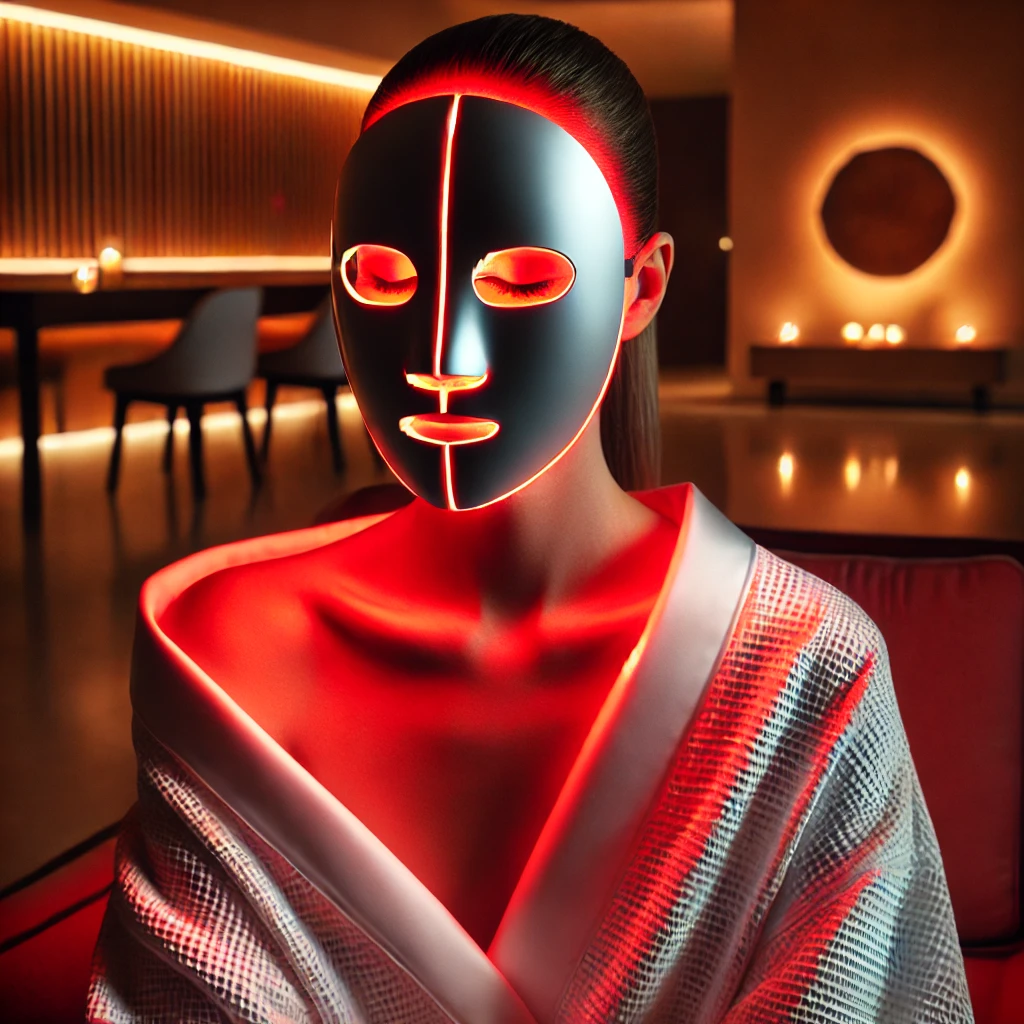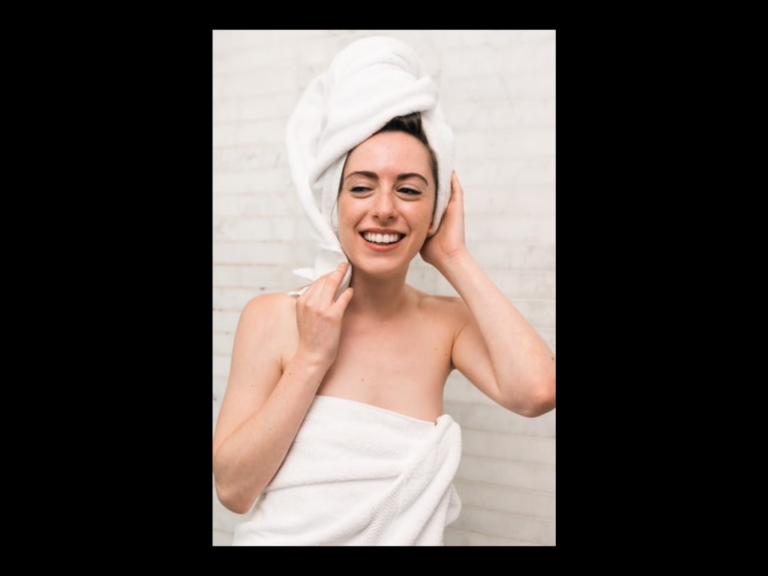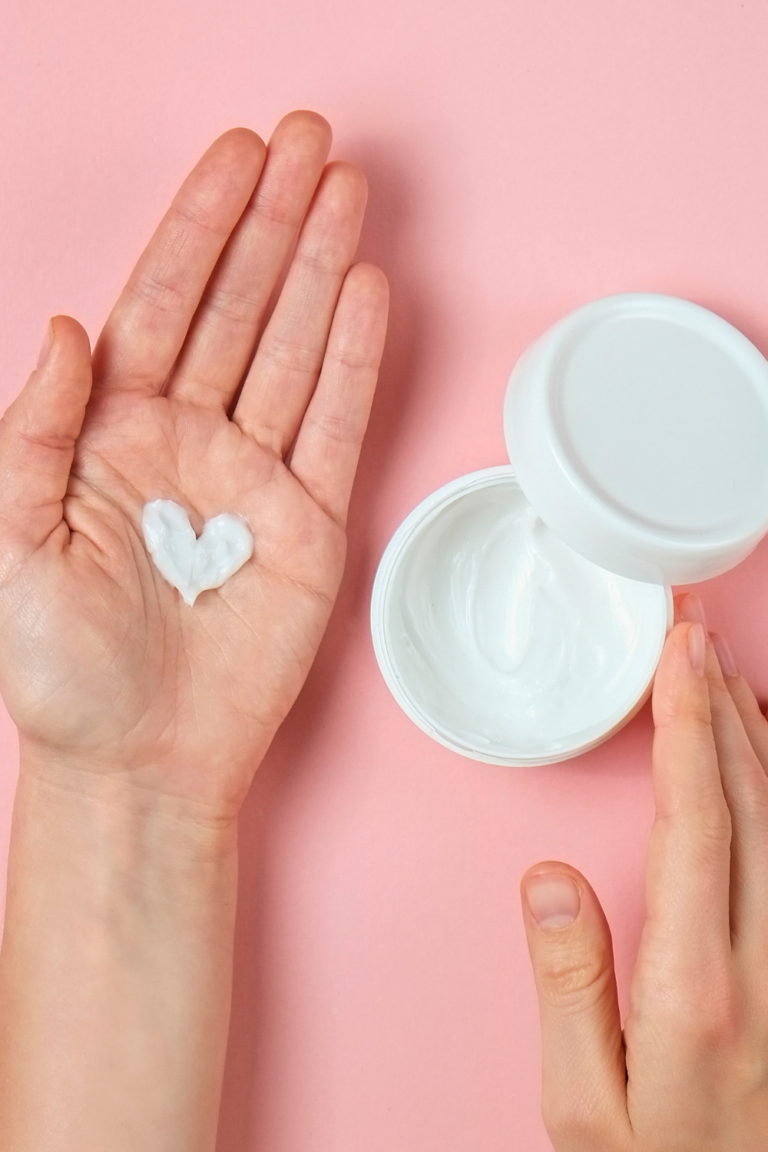Red Light LED Masks: Unmasking The Hype, What You Need To Know & Do They Work?
The amount of people showing up on my feed wearing masks with a spooky red glow and doing their skincare routines has skyrocketed. We are all curious about red light LED masks and want to know if the hype is real. I did some digging and here’s what you need to know.
Table of Contents
What is a red light LED mask?
A red light LED mask is a device with tiny red bulbs called light-emitting diodes (LEDs) to emit red or near-infrared light on the skin and body for benefits such as anti-aging, hair growth, healing, and inflammation.
What is red or near-infrared light?
Before we dive into the masks, it’s important to understand what red and near infra-red (NIR) light is.
Red light and near-infrared (NIR) light are specific wavelengths of light within the electromagnetic spectrum — all the different waves of energy that travel through space at the speed of light. X-rays, radio waves, UV rays, gamma rays, visible light, microwaves, and infrared are examples of different wavelengths of light in the electromagnetic spectrum.
The wavelength range of red light is 620-750 nanometers (nm), penetrating about 2–3 millimeters into the skin, targeting issues such as fine lines, wrinkles, and inflammation closer to the surface level. NIR light is 750-1200 nm penetrating deeper than red light into tissues reaching up to 5 cm for skin elasticity, inflammation, redness, and wound healing. NIR light is also used in muscles, bones, and joints.
For the purposes of this blog post, the focus is on red light only.
The science and benefits of red light LED therapy
When red light is absorbed into the cell, photobiomodulation (PBM) happens, which means the light changes and impacts the biological and cellular processes in the skin.
Boosts adenosine triphosphate (ATP) production for skin health
Mitochondria are known as the “powerhouse” in cells. They generate the energy needed for cellular functions; regulate cellular metabolism; and play a key role in processes like cell signaling, growth, and apoptosis (cell death).
When a red light is targeted on the face or body, it is absorbed through a key enzyme, cytochrome c oxidase, in the mitochondria and boosts the production of adenosine triphosphate (ATP), the primary molecule that provides energy for cell function.
ATP provides the energy for fibroblasts, a type of cell in connective tissue, to produce proteins such as collagen and elastin, which are primarily responsible for the elasticity and firmness of the skin. They are also essential for wound healing, tissue regeneration, and maintaining skin health.
Reduces excessive free radicals
Our bodies naturally have free radicals (atoms, molecules, or ions with an unpaired electron in their outer shell, making them highly reactive and unstable) as a by-product of cellular processes. These highly reactive molecules called reactive oxygen species (ROS) contain oxygen.
The body requires ROS (or free radicals) to act as signaling molecules to let the body know when it needs growth, repair, immune responses, or other processes. In low or controlled amounts, ROS is okay, the trouble happens when there is excessive ROS in the body, which can be caused by environmental factors (UV radiation, pollution, smoking, toxins, and infections); lifestyle (poor diet, smoking, excessive alcohol consumption); and health conditions chronic inflammation, obesity, or diseases like diabetes and neurodegenerative disorders. Oxidative stress happens when there is an imbalance between excessive free radicals and the cell’s ability to neutralize them with antioxidants; it can damage skin health and accelerate aging.
All this is to say that red light therapy can be used to induce ROS in controlled amounts to activate antioxidant defenses to neutralize excessive ROS and protect cells from oxidative damage while promoting healing and regeneration.
Improves circulation and oxygen delivery
Similar to ROS, there is another category of free radicals known as RNS (reactive nitrogen species) occurring naturally in our cells, which also act as signaling molecules to regulate processes such as vasodilation (widening of blood vessels), blood pressure, heat regulation, tissue repair, blood flow, immune responses, and cell communication. Nitric oxide (NO) is an important RNS to be aware of with red light therapy. Note: Not all RNS are free radicals.
Excessive nitric oxide binds with the enzyme cytochrome c oxidase (CCO), which is responsible for oxygen utilization in cells, and inhibits cells’ ability to use oxygen and produce energy. Red light therapy is used to reduce the effects of excessive NO. Red light when absorbed by CCO displaces nitric oxide from its bind. The nitric oxide is then released to surrounding tissues, allowing the cell to use oxygen more efficiently.
During red light therapy when nitric oxide is released from a cell, it also triggers a vasodilation effect, which allows for improved blood flow, delivering more oxygen and nutrients to the cells and tissues for better cellular function. You might notice right after red light LED therapy the skin appears more radiant and youthful due to increased circulation.
Reduces inflammation
Cytokines are small proteins secreted by cells that play a crucial role in signaling the body’s responses to stimuli such as infections, injuries, or stress. There are different kinds of cytokines such as pro-inflammatory cytokines, which drive inflammation, and anti-inflammatory ones which restore balance and reduce inflammation.
Red light therapy, which reduces oxidative stress and enhances ATP production, signals in the cell pathways toward anti-inflammatory cytokines because cellular function is healthy and optimal, preventing the overactivation of pro-inflammatory cytokines and reducing inflammation.
What to look for in an at-home device?
Wavelength
Data shows that a specific wavelength of red light– 630-660 nm — is effective for cells and tissues. Consider it a red flag, if the product shows a much wider range or no specific range for the wavelength.
Irradiance (Intensity)
Irradiance is the measure of the intensity of the device. Measured in milliwatts per centimeter squared (mW/cm2), irradiance tells us how much energy is targeted at one cm2 of skin per second. The range suitable for skin varies from 10-200 mW/cm2, but to see results dermatologists suggest closer to 40-120 mW/cm2 in at-home devices. Again, if a company doesn’t print or disclose the device’s irradiance, it is also a red flag.
Treatment time, frequency, and distance from surface
If the irradiance is higher, then the treatment time is shorter. You also have to keep in mind how far the device is from the targeted surface. All three factors are required to know the dosage of light your skin needs.
FDA/CE Certification & Clinically-Proven
Make sure the device is either FDA or CE-certified and product claims are supported by clinical studies. The second part is especially important because many products the FDA/CE-certifications are required to sell the product, but have no real bearing on the efficacy.
Different ways to use red light LED masks
Red light LED face and body masks can be used on their own or in conjunction with other treatments. For example:
- Healing after skin treatments such as hydra facials, skin peels, lasers, and dermal fillers
- Protecting against sun damage. Using the mask before sun exposure promotes ATP and antioxidant production, which builds up the skin’s resilience against the effect of UV rays.
- Combining with cold plunges. Start with the cold plunge to reduce inflammation and activate the nervous system followed by red light therapy to promote relaxation, enhance recovery, and support cellular repair.
- Promoting hair growth
When to use a red light LED mask in a skincare routine
Red light LED masks should be used on clean and dry skin, so after cleansing the skin and before toners and serums. Most LED masks should be used for a maximum of 10-30 minutes each time, depending on the dosage. In general, capping it at 20 minutes is a good rule of thumb because there’s no added benefit from using it for extended periods.
To gain the benefits of red light LEDs, it is recommended to use the mask as frequently as your routine will allow. Daily is optimal, otherwise the bare minimum is at least 3 times a week to see results after 4-6 weeks of regular use.
Finally, do at-home red light LED masks work?
Yes, but with this important caveat: the effects only last for as long as you are using the device. If you stop, the benefits do, too.
Red light LED therapy has proven health and wellness benefits. But, the more important issue is that not all at-home devices are created equal. The cheaper and smaller ones aren’t powerful enough to have much impact (despite what the product may claim) and the medical-grade ones with clinically proven results recommended for at-home use are expensive and retail starting from USD 500.
So, what does that mean? It’s really up to you. If you feel an at-home red light LED mask fits into your daily routine and you can commit to using it regularly, then it might be worth the investment. If not, then no love lost, your current skincare routine is most likely fine as it is and you shouldn’t feel bad about it.
Bottom line: red light LED masks are a (very) nice to have, but not a must-have.
Related:
Elevated Cortisol: What You Need To Know For Women’s Fitness and Health
All About Hyperpigmentation: Causes, Treatments, Good -For-You Ingredients & Makeup Tips
Here Are Some Great Skincare Products For Men
I Used A Rose Quartz Facial Roller For Two Weeks and Here’s What I Learned





